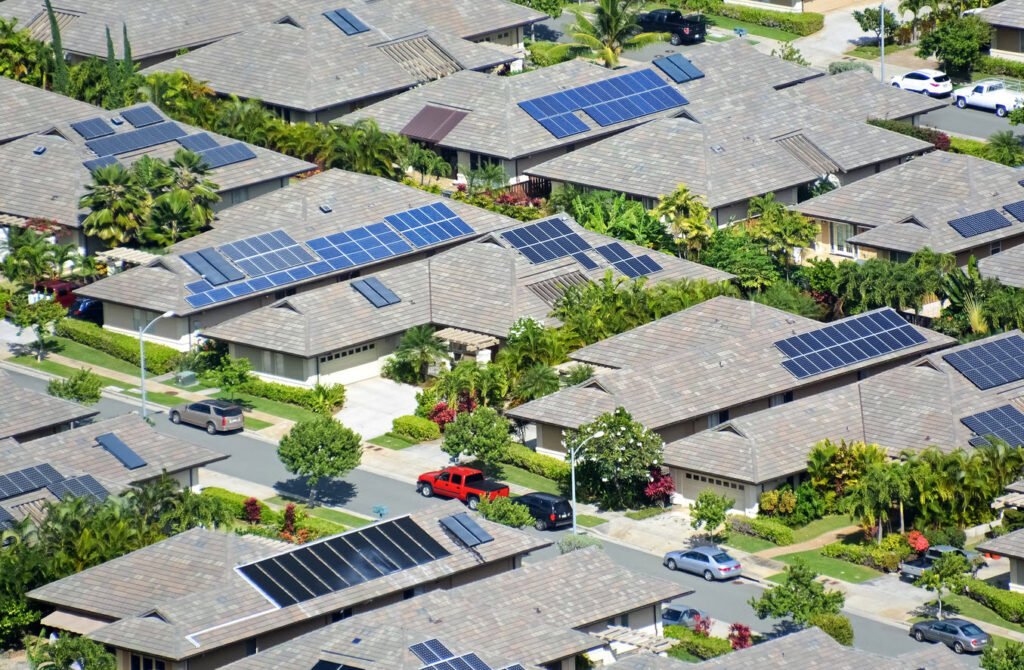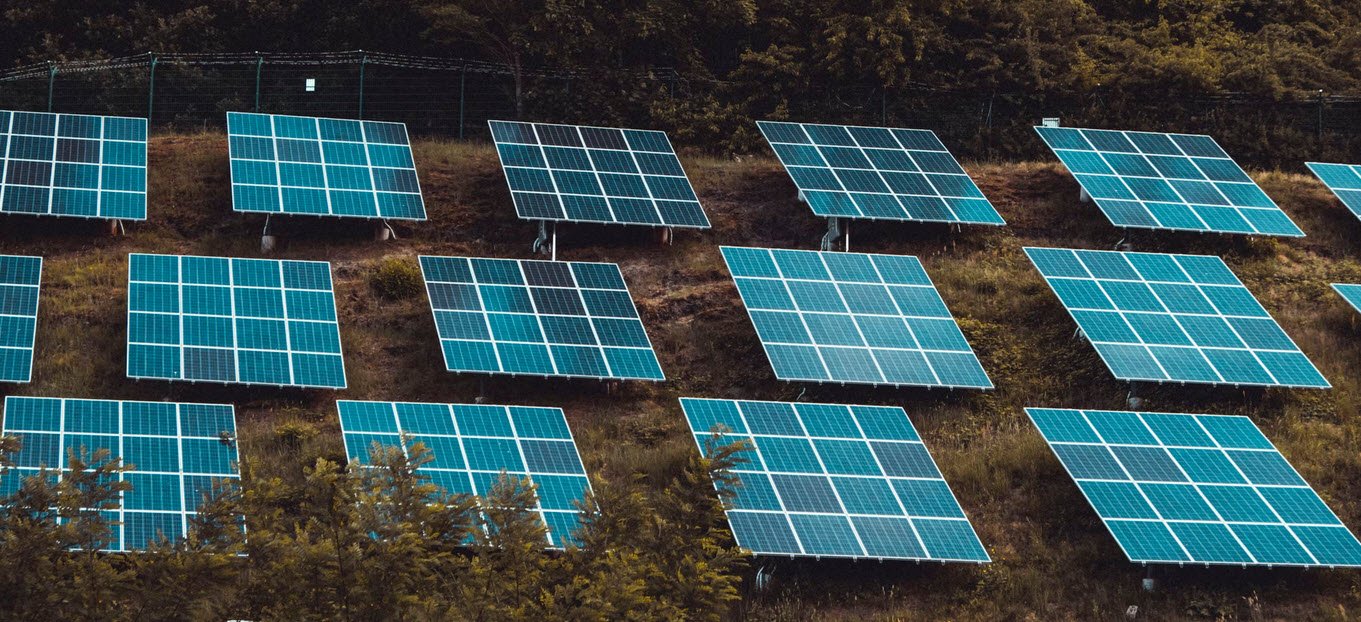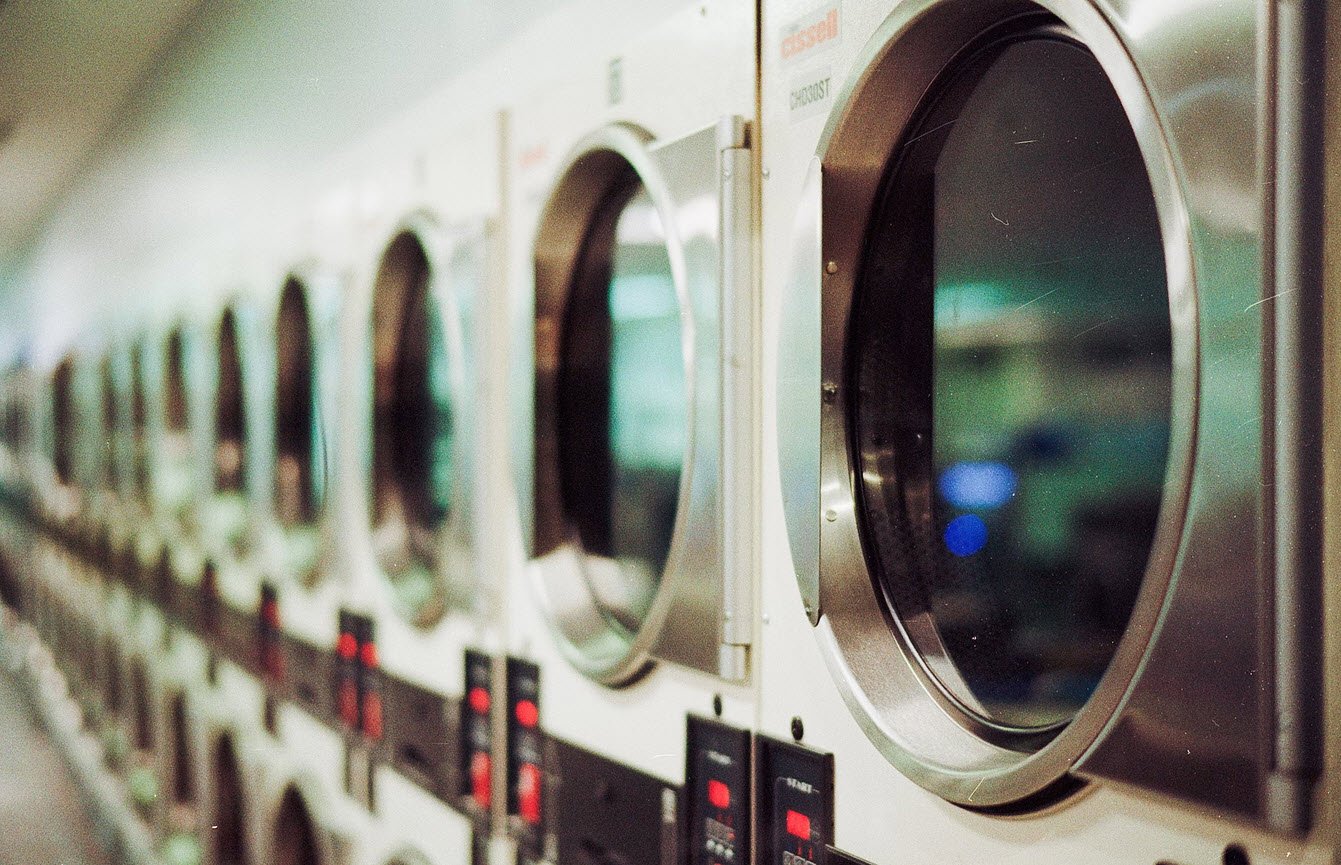
In today’s climate of growing energy needs and increasing environmental concern, alternatives to the use of non-renewable and polluting fossil fuels have to be investigated. One such alternative is solar energy.
Solar energy is quite simply the energy produced directly by the sun and collected elsewhere, normally the Earth. The sun creates its energy through a thermonuclear process that converts about 650,000,000 tons of hydrogen to helium every second. The process creates heat and electromagnetic radiation. The heat remains in the sun and is instrumental in maintaining the thermonuclear reaction. The electromagnetic radiation (including visible light, infra-red light, and ultra-violet radiation) streams out into space in all directions.
Only a very small fraction of the total radiation produced reaches the Earth. The radiation that does reach the Earth is the indirect source of nearly every type of energy used today. The exceptions are geothermal energy, and nuclear fission and fusion. Even fossil fuels owe their origins to the sun; they were once living plants and animals whose life was dependent upon the sun.
Suggested Read: Floriculture and Gardening Related Questions
Due to the nature of solar energy, two components are required to have a functional solar collects the radiation that falls on it and converts a fraction of it to other forms of energy (either electricity and heat or heat alone). The storage unit is required because of the non-constant nature of solar energy; at certain times only a very small amount of radiation will be received. At night or during heavy cloud cover, for example, the amount of energy produced energy generator.
These two components are a collector and a storage unit. The collector simply by the collector will be quite small. The storage unit can hold the excess energy produced during the periods of maximum productivity, and release it when the productivity drops. In practice, a backup power supply is usually added, too, for the situations when the amount of energy required is greater than both what is being produced and what is stored in the container.
Solar energy is one of the purest and clean forms of energy we receive on earth, without any environmental degradation. Thanks to the never-ending solar radiations we receive, it is responsible for all the life processes taking place on earth. If we tap into this energy systematically, this can be the largest source of energy, and even a tenth of energy from solar rays on earth can solve the entire energy crisis.
1. You Can Make Money
One of the best advantages of solar energy, and the one that is primarily responsible for the rapid growth of solar installations in Europe over the past several years is that you can make money
from the sun.
As a result of feed In Tariff policies in place in much of Europe, you can build sell the electricity, and that income can last for 20 years or more. For each dollar you can reduce your electrical bill, your house can increase in value by up to $15-$20.
Even if you don’t build the solar yourself – in some markets solar companies might be willing to lease your roof or land to install their solar installation. In some cases a joint venture arrangement is also a possibility.
2. You Can Save Money
If you use the electricity yourself, instead of buying it from the grid, you can save money, which is just as good as making money. This advantage alone is propelling the rapid adoption of solar
energy in the USA and many other markets around the world.
3. Solar Energy Is Abundant
The sun will be around a lot longer than oil, coal or gas will be. Some of the materials used to make solar cells to convert the solar energy into electricity, such as the more exotic composite materials may run out over time, but the basic elements used to make solar cells (e.g., silicon and aluminum) are all abundant and recyclable.
4. As Long As there is Light – It Works
The amount of sunshine can vary depending on where you are or what the weather is like, but as long as there is light (even a small amount) PV cells can still produce electricity.
5. Sunshine Is Free
Solar energy is free. Sure, there is an initial capital cost to install a system that will convert the electromagnetic energy and photons sent out by the sun into electricity, but once you have made the investment and the sun keeps shining you will be producing electricity. No one will be sending you a bill for sunshine.
6. Environmentally Friendly
Solar energy powers the environment and life on the planet so there’s no energy source more earth-friendly. Compared to the burning of fossil fuels, which release greenhouse gases, carcinogens and carbon dioxide, solar cells do not release anything harmful into the air as they convert the sun’s energy into electricity. If you want clean air – one of the important advantages of solar energy is that it will help get us there.

7. Cost Effective
While a solar photovoltaic panel is still relatively expensive, it will pay for itself over time from the sale of electricity or from saving you money by reducing the amount of electricity you’ll have to buy. The time it takes you to recover your net investment (investment less incentives) is known as the payback period. Generally, the payback period for solar installations is getting shorter and shorter.
Note: Solar hot water panels have been greatly improved in recent years and, with lower cost, payback times for domestic systems can not be as short as five years.
In some geographical areas producing electricity from the sun already costs less per kilowatt hour of electricity produced than producing it from fossil fuels.
As coal, gas, oil and nuclear energy fuel prices continue to raise solar energy will become even more cost effective. There is a start up cost, but then it starts paying for itself. Once you break even, everything after that is profit. Compare this to paying a monthly bill and getting no return on investment.
8. Solar Energy Is Clean
Solar energy is a clean alternative to fossil fuels and nuclear power. It’s silent. Solar power can be captured anywhere without creating noise pollution that might otherwise up set neighbors and wildlife. Thus, no danger of damaging our already damaged environment further and you can be part of the Green initiative, lower your carbon footprint, and save our planet from harmful greenhouse gases.
9. Greatly Reduced Contribution to Global Warming
One of the greatest advantages of solar energy, of course, is that there is no carbon dioxide, methane or other emissions that warm the atmosphere. However, manufacturing, transporting and installation of solar panels are necessarily accompanied by some of those emissions.
You may also like:- Don’t Buy A House In These 5 US Cities
- A Guide to Prepare for Your First Home Purchase
- A Comprehensive Guide to Saving on Major Appliances
- How to Save on Home Improvement – Cost-Effective Tips for Enhancing Your Space
- Practical Tips and Strategies for Saving Money on Furniture Purchases
- 51 House Cleaning Shortcuts to Save Time and Effort
- 5 Signs of a Good Air Duct Cleaning
- Tenant’s Guide – 5 Things to Remember When You Move In
- 7 Simple Reasons Why You Need a Network Security Camera for Your Home
- Fire Safety Checklist for Home – A Comprehensive Guide








